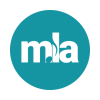The April RDA Toolkit release was published on Tuesday, April 11, 2017. The release contains an RDA update, including approved proposals from the November 2016 RSC meeting. The release also contains Fast Track changes from the RSC as outlined in document RSC/Sec/7 available at the RSC website. Work continues on the synchronization of the Toolkit and Registry, part of the first phase of the larger RDA Toolkit Restructure and Redesign (3R) Project. The release also includes changes to several LC-PCC Policy Statements (LC-PCC PS), summarized in this document available at the LC website.
Several changes were also made to the MLA RDA Best Practices; these changes will be covered in a separate blog post.
RDA Music-Related Changes
New/Revised instructions
Plate Number for Notated Music (RDA 2.15.3.1 & 2.15.3.3): The second paragraph of the former instruction clarifies information about the plate number. The latter instruction features new examples.
Medium of Performance (RDA 6.15): This instruction has been completely revised (see RSC/MusicWG/3/rev/Sec Final for more information). This document also contains mapping between the “old” 6.15 and the “new” 6.15.
Additions to Access Points to Representing Musical Works (RDA 6.28.1.9 & 6.28.1.10): The new 6.28.1.9 consolidates and completely replaces the former 6.28.1.9 and 6.28.1.10. As a result, 6.28.1.10 has been deleted (see RSC/MusicWG/4/rev/1/Sec Final for more information).
Capture Information (RDA 7.11): This element sports a new name; it was formerly known as “Place and Date of Capture.” A new instruction, “Note on Capture” (RDA 7.11.4) has been added to provide a place to record information associated with the capture of content beyond the date and place of capture.
Glossary changes
Revised entries: capture information, date of capture, plate number for notated music
New entries: all regions, details of regional encoding, mixed aspect ratio, note on capture, region 1, region 2, region 3, region 4, region 5, region 6, region 7, region 8, region A, region B, region C (Blu-ray), region C (video game), region J, region U/C, regional encoding
New “see” references: region 0, region 9, region ABC, region free
Fast Track changes
As part of the larger synchronization process, vocabulary terms within RDA instructions have now been synchronized with the RDA Registry. Terms appear alphabetically within RDA instructions; see “Recording Format of Notated Music” (RDA 7.20.1.3) as an example.
Other RDA Changes of Interest
Regional Encoding (RDA 3.19.6): The definition of “regional encoding” has been revised, incorporating more standard RDA wording (e.g., using the phrase “designation for” rather than “term representing”). Regional encoding vocabulary has been added (RDA 3.19.6.3). The designation “all regions” should be used for designations “region 0” and “region free.” A new instruction “Details of Regional Encoding” (RDA 3.19.6.4) has also been added.
Variant Access Points (RDA 5.1.4, 8.7, 9.19.2.1, 10.11.2.1, 11.13.2.1): Revisions to these instructions provide greater flexibility in creating variant access points. See RSC/ALA/3/Sec Final for further information.
To facilitate the 3R project, RDA content will be frozen until the April 2018 Toolkit release. During this time CSS will undertake a full review of the RDA Best Practices, with an eye toward synchronization with the LC-PCC PS, updating/revising examples, and looking at an alternate presentation format for Supplement 1. CSS will also continue to collect suggestions and feedback regarding the RDA best practices. Suggestions for new or revised Best Practices can be made via the submission form located in the FAQ on the CMC website.
